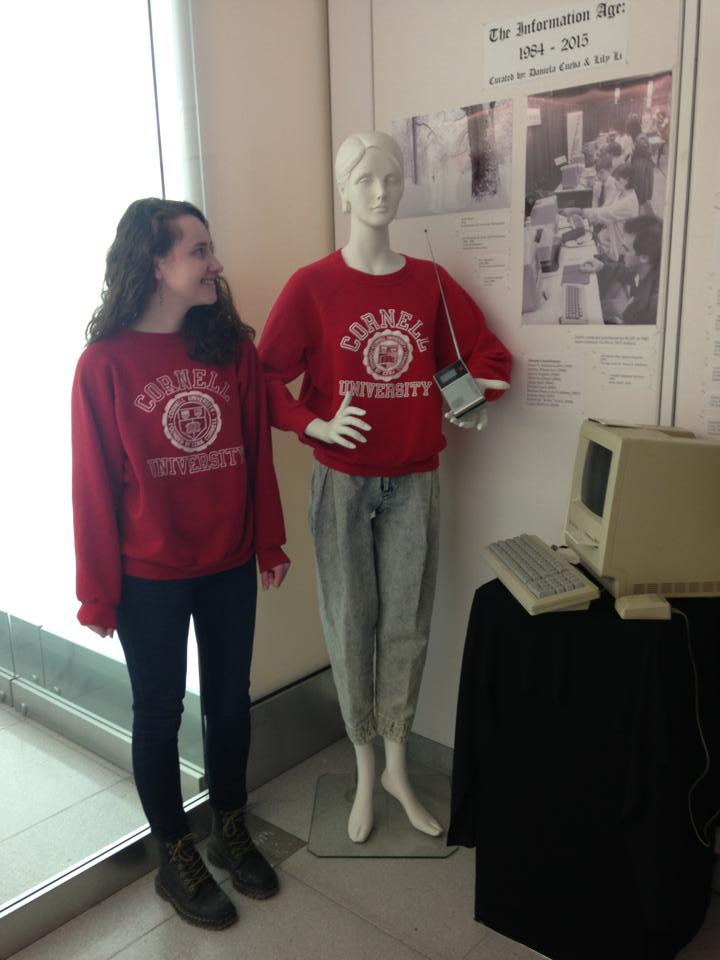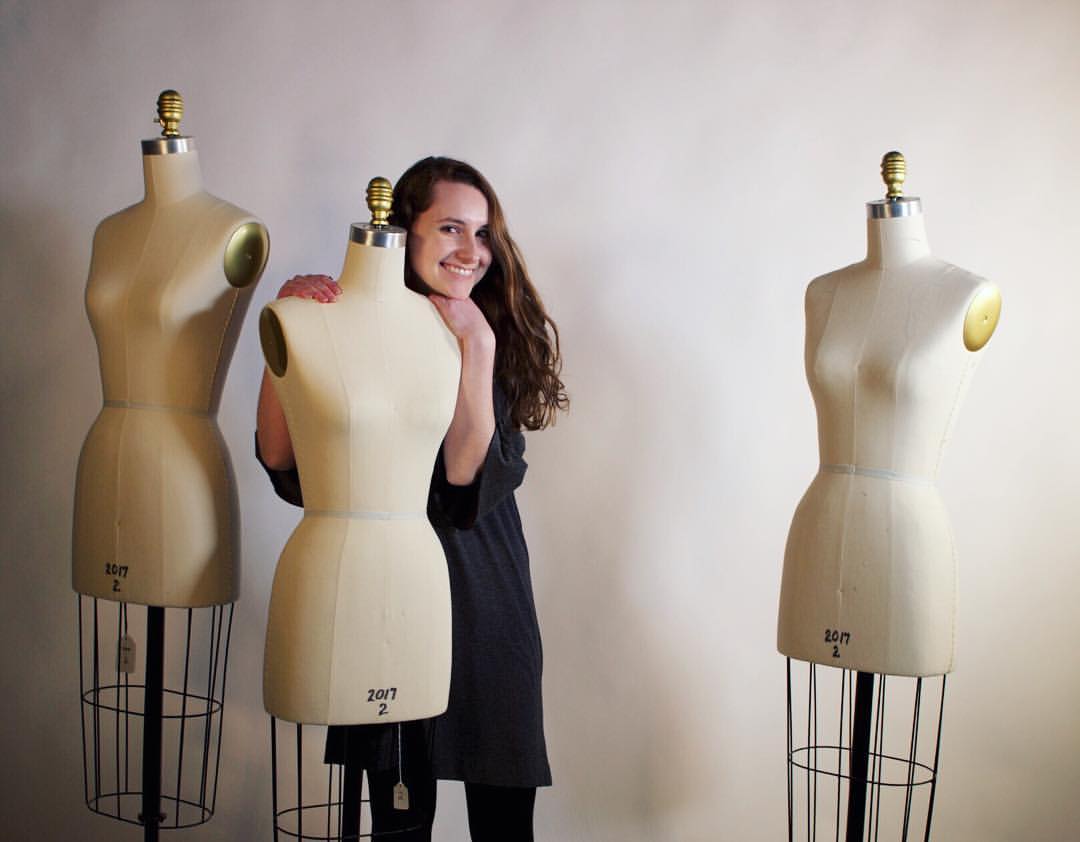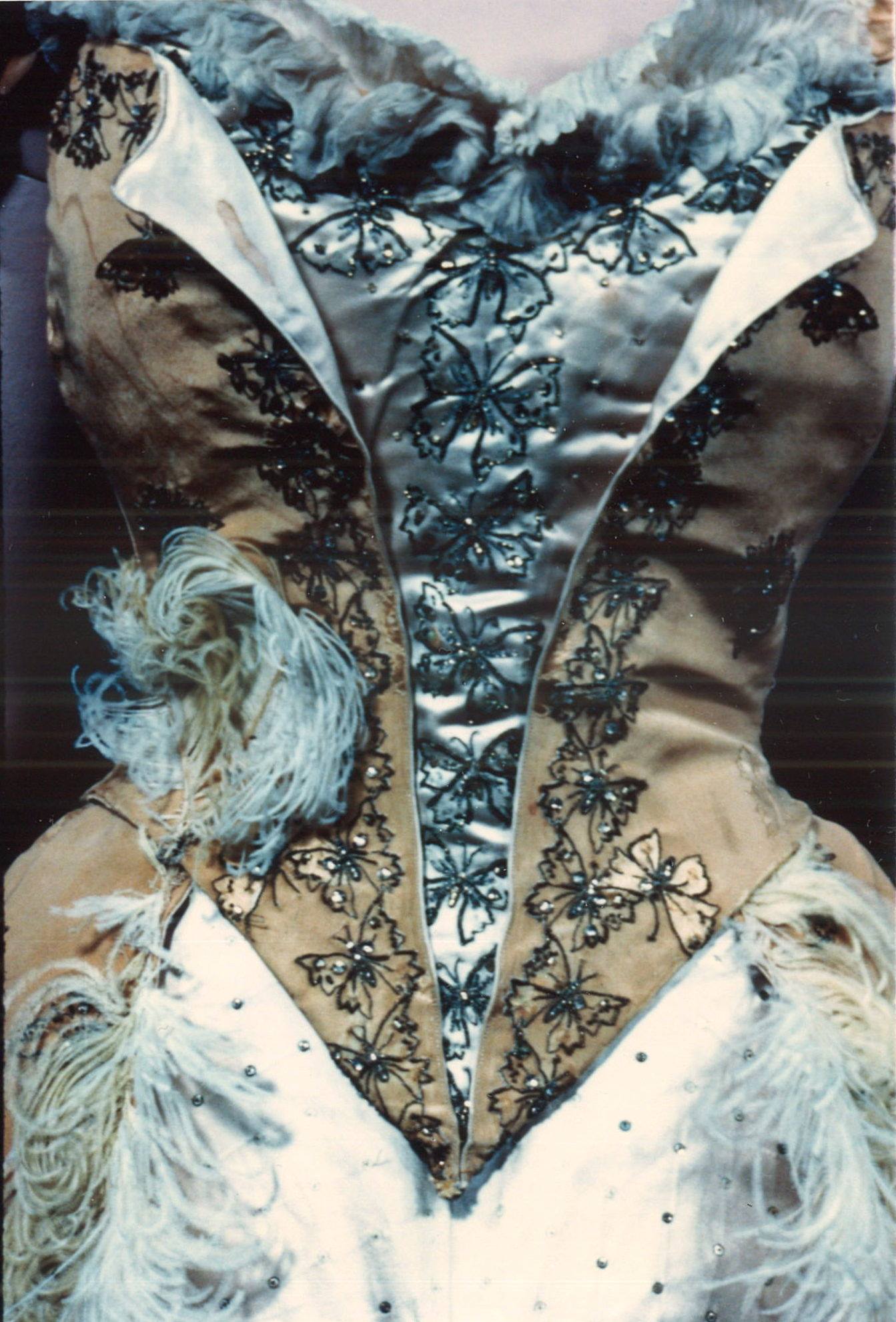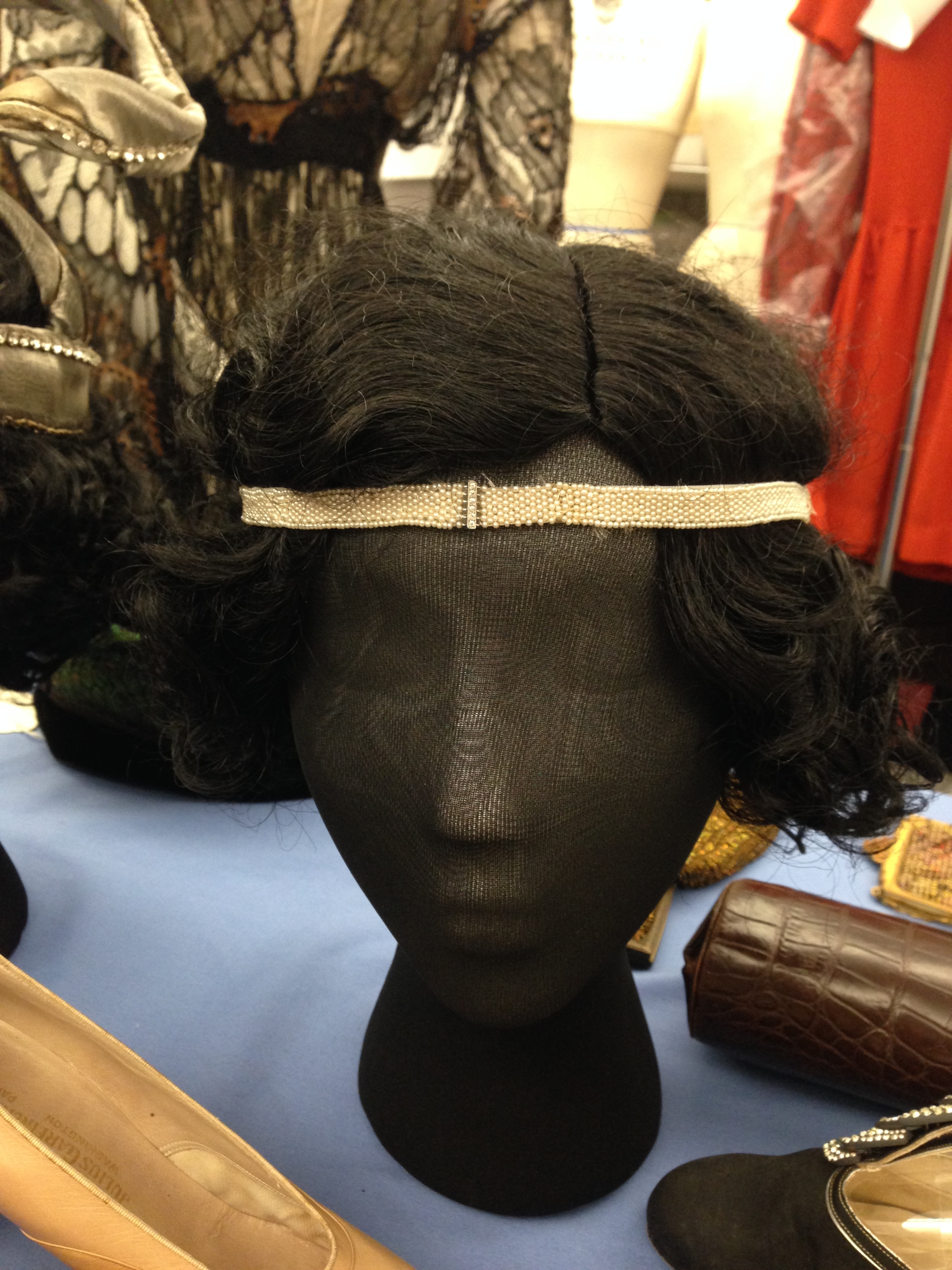Jacqueline Fogarty ’18 majors in Fashion Design and will debut her senior collection in the 34th annual Cornell Fashion Collective show this coming Saturday! In addition to finding inspiration from the collection, she also uses her design skills to enhance our exhibitions. From suspending Liberian quilts from the ceiling of the Jill Stuart Gallery to taking on the intimidating task of reconstructing one of Irene Castle’s very own headbands, Jacqueline has proven an integral part of the collection since joining our team fall 2014.

Liberia in Stitches, March 2016. Jacqueline assisted with hand-sewing casings to the back of each quilt so that they could be mounted and safely suspended from the gallery ceiling.
When did you begin working in the collection and what inspired you to join the CCTC?
I started working in the CCTC in December of my freshman year, so I have been working there for almost three and a half years now. While taking FSAD 1250: Art, Design, & Visual Thinking with Professor Green I was introduced to pieces in the CCTC and I realized what a rich and unique resource we had at Cornell and I sought to get involved.

From left to right, Liberia in Stitches curator Dr. Stephanie Beck-Cohen, Jacqueline Fogarty ’18 and Regina Mun ’19 discuss mounting techniques for the quilts.
What is your favorite piece in the Cornell Costume & Textile Collection and why?
I would say my favorite item in the collection is a late 19th c. Worth gown with metal beading and details. Not only does it represent an iconic moment in fashion history, but it was also one of the first gowns I worked with when I began as a research assistant in the collection. I almost had a mini-heart attack when I realized that I was holding an original Charles Frederick Worth gown. I knew in that moment working in the CCTC was going to be the right choice for my time at Cornell.
Share one surprising thing you’ve learned while working in the collection:
On US military uniforms, you can read people’s career stories based on the medals and insignia on their livery. I worked on an extensive collaborative project between the CCTC and Cornell Wortham Military Museum that exposed me to the history and practices of US military uniforms. I was able to share many of the things I learned in a blog post, Beyond the Stars and Stripes.

Major Kate Hopwood Payne (1914 – 2008) joined the U.S. Navy (WAVES – Women Accepted for Voluntary Emergency Service) in 1942. like all WAVES uniforms, was designed by American couturier Mainbocher.
How has the CCTC helped in your career goals and aspirations?
Working in the CCTC has expanded my breadth of knowledge of fashion history and cross-cultural understanding. In my design practice I focus on womenswear; therefore, a strong foundation in the industry’s history is critical. During my internships at Oscar de la Renta, Michael Kors, Tommy Hilfiger, and Kenneth Cole I have been able to contribute historical references and ideas during design development based on my knowledge built from the CCTC. The hands-on approach of working in the CCTC has also taught me the proper appreciation and care for materials which applies similarly to working in the industry, for example when handling runway samples or assisting with custom garments.
If you were to donate one item from your personal wardrobe to the collection, what would it be and why?
I would donate a black turtleneck sweater I love and frequently wear. It has an asymmetrical hem and side slit which are interesting design details for a simple black sweater. It represents my dimensional yet edited aesthetic but also is appropriate for my time at Cornell because the majority of our time on campus is spent in fall and winter clothing!
What is missing from the CCTC? What garment, textile, or accessory do you think we should have, but don’t?
When I try to brainstorm any item to add, we already have it! From fire suits to original Charles Frederick Worth gowns, the CCTC seems to have it all. As a fashion design student it is the ultimate dream closet.
What has been your most meaningful project in the CCTC?
One of the most meaningful projects I worked on during my time as a research assistant was restoring silent movie star Irene Castle’s beaded headband that was loaned to us for the exhibit The Biggest Little Fashion City: Ithaca and Silent Film Style. The headband was originally in many pieces with loose strings and beads, and the conservation work took around three weeks of beading. It was a special moment to revive a piece of history into the spotlight of an exhibit.
What is your hope for the future of the CCTC?
I hope the CCTC continues to be a resource for the Cornell community and public beyond Ithaca and that the mission to represent a variety of fashions and cultures persists and expands over time.

Jackie wearing a Cornell sweatshirt her mother purchased when she was a Cornell student in the early 1980s. It was an exact duplicate of the sweatshirt we selected to represent the 1980s in our 2015 exhibit, 150 Years of Cornell Student Fashion.



